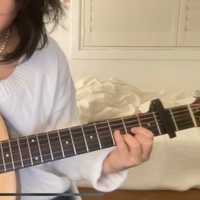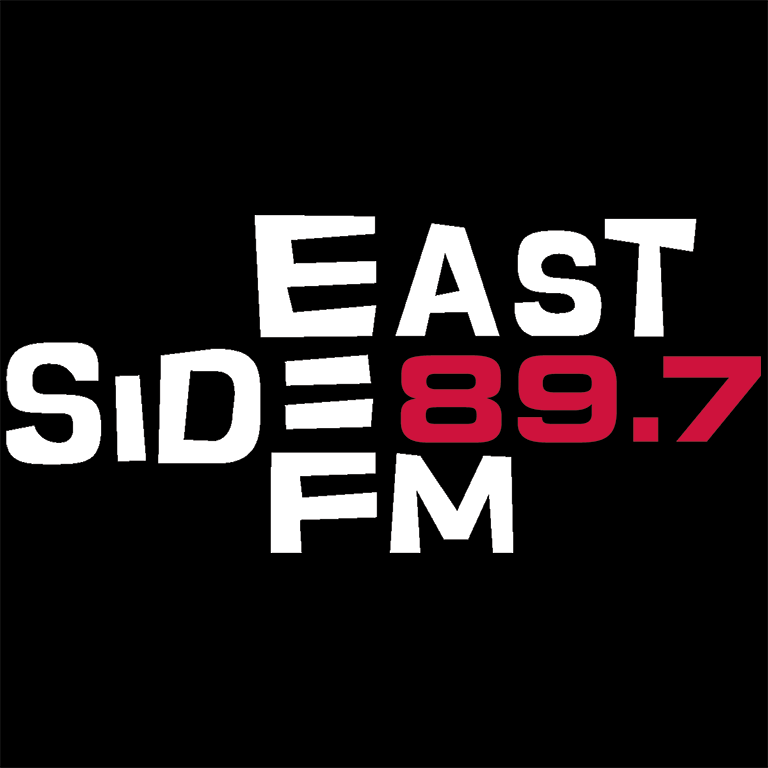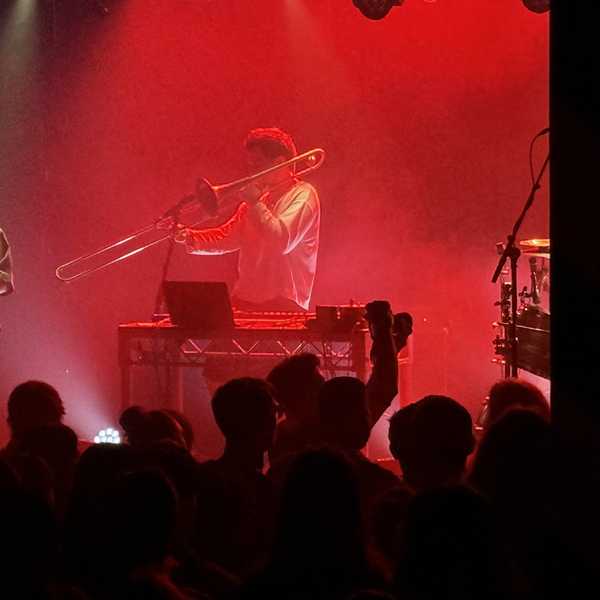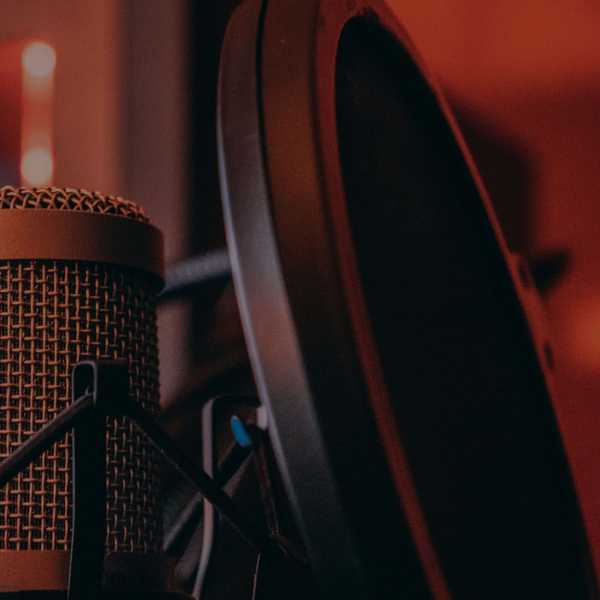Zac’s wearing dark slacks and a plain shirt – nothing compared to what’s about to come. He’s just been on a last-minute shopping run down Oxford Street – and pulls out a pair of black stilettos – scattered with silver glitter, the kind you’d expect to see a stripper sporting somewhere seedy in the Cross, ‘Aren’t they great?’ He says excitedly, not expecting an answer. “Hope I can slut drop in them!” He says jokingly, but really isn’t joking. The recording equipment doesn’t work at first and he teases that it’s just the demon that follows him, and asks it to leave the room, mysteriously the equipment works after that.
Zac describes himself as a ‘queer, loud blackfella’, although he’s small in stature, his presence fills the room with a kind of over the top energy that makes you want to grin ear to ear. He’s flown to Sydney from his nine to five office job as a policy officer at the Department of Premier and Cabinet in Melbourne to perform in this year’s Miss First Nations National Grand Finale. The week-long competition showcases Australia’s best Aboriginal and Torres Strait Islander drag performers coming from as far as the Northern Territories’ Tiwi Islands, as well as local representatives from Wiradjuri and Kamilaroi country.

Zac, or Zodiac is an Anaiwan man from Armidale in country New South Wales. He’s smart, not the kind of smart that gets straight A’s at school – but the kind of smart that knows his worth and refuses to accept anything less.

Drag and Aboriginal culture are more alike than most people think, ‘It wasn’t until colonisation, which really wasn’t that long ago that we were indoctrinated with Christian beliefs that destroyed our culture. Aboriginal people have been performing and creating for centuries, we are the oldest living indigenous culture, after all’ Zac says. Having a queer family and having an Aboriginal family are both essential facets of both cultures, and this custom lives on, not only for its traditional place in people’s lives – but for its necessary place as living as part of marginalised Australian society.
Zac describes the black drag community as a ‘minority, within a minority, within a minority’, which is why the black and queer space created by Miss First Nations is so important. While most drag queens free themselves from as many of the restrictive conventions enforced on them by the monotony of ‘where they came from’, for Aboriginal and Torres Strait Islander queens, home and heritage is central. Their stage names, costumes and performances show off the pride they have in their Indigeneity and how they choose to own their identities.
Zodiac has been paired with Bailey Legal for the week. They’re sharing a room in the middle of Camperdown. They’ve renamed their room the ‘drag-sty’, and they’re not wrong. You can’t see the floor beneath the array of wigs scattered on the ground, in almost every shade you can imagine. Amongst the wigs is clothes and shoes, so many shoes. There’s a pair of thigh high white boots with a stiletto heel that could definitely cause some damage. The boots are covered in diamonds and giving off definite Brittany Spears circa 2000 vibes.
This is nothing compared to their bedroom. You can’t even see their bed – they’ve relocated all the furniture from the room onto it so there’s more space to spread their makeup. They’re both sitting in front of the mirror, topless with drinks in hand.

The front door opens, and a woman walks in wearing blue jeans and basic jumper matched with a pair of white thongs – even though it’s pissing down rain outside and cold. “Where the fuck have you been?” Bailey yells out. It’s her mum, Corrina. She’s just arrived after a nine-hour drive from Bourke. Bailey grabs the bottle of amyl, or poppers as they are mostly referred to in the LGBTIQA+ community, “She’s a fuckin’ coppa!” she whispers as she throws the bottle under the bed. Corrina doesn’t really get a moment to say hi before she is ordered around the apartment to help pack Bailey’s bag for the evening. There’re four costume changes to prepare for, and they’re already running late.

Bailey’s final costume for the evening is the formal dress she wore to her year twelve formal in Bourke a few years ago. “When the school found out Bailey wanted to wear a dress to the formal, they pulled us into a meeting and said he wasn’t allowed,” Corrina recalls. It wasn’t long before Bailey started a petition at his school and was in contact with several lawyers to make sure he could attend the formal as his “best self” – all on his own, Corrina reminds her. After a month of battling the school, parents and several classmates – Bailey attended the formal in a stunning full-length gown, covered head to toe in silver sequins, matched with a pair of black platform stilettos of course.
She’ll wear this gown again at the closing ceremony to send a message to other LGBTIQIA+ kids in the bush, Aboriginal or not, “I really want to make my community proud. I really want to bring home the crown for Bourke so queer youth there can be like ‘We got this!’”
The performance is happening at a familiar venue to the LGBTQIA+ community, the Imperial Hotel in Erskineville – home of Adventures of Priscilla: Queen of the Desert. It’s full, sold out in fact. The crowd is vibrant and audibly excited for what’s come, bopping to a playlist made up mostly of Madonna and Cher awaiting the Queens. Amongst the crowd is John, his partner Mad B is one of the finalists. He’s been here every night this week to support her. They both crowdfunded to make it this week from Canberra. They’ve left her 4 kids at home, or the ‘chocolate rainbow’ as they usually refer to them as.
John pulls out his phone to reveal a video of Mad B’s performance from the previous night, it was the Lip-Synch Extravaganza. Whilst not the most polished of the Queens, Mad struts her stuff to Beyoncé’s love ballad, Irreplaceable. The ending of the performance has been referred to as the ‘most iconic lip-synch finale ever’. As Mad B does her grand finish, she turns around to reveal a piece of paper stuck to the back of her red sequin dress, with the words ‘Will you marry me John?’ scribbled in black and red marker. The phone speakers blare as the crowd in the video cheer, their screams blend into the cheers in the room as Miss Ellaneous and Marzi Pan come onto the stage to greet the crowd. They start with a Welcome to Country before anything else, with the whole room chanting ‘always was, always will be’ as an Aboriginal and Torres Strait Islander flag roll down to create a backdrop on the stage.

Four costume changes, several sashays and an abundance of slut drops later it’s finally time to announce this year’s winners. There are ten titles to take out, meaning every Queen takes home at least one sash.
Bailey Legal is standing to the left of the stage, wearing her silver sequin year twelve formal dress proudly. Zodiac is to the right in a Marina and the Diamonds getup. Mad B is centre stage in sequins and a red wig blowing kisses to John. Amongst them is a group of five other loud and proud queer First Nations Queens. Every one of them has a look of profound happiness on their faces, revelling in the positivity and appreciation of the crowd. The room is drenched in an overwhelming thickness of love and acceptance, oozing out of everyone’s cheers and laugher. No one is stronger than a group of Faboriginals in six-inch heels and nine pairs of pantyhose.

Share "Faboriginal – The Glitz and Glam of the Nation’s Best Indigenous Drag Queens"
Copy








